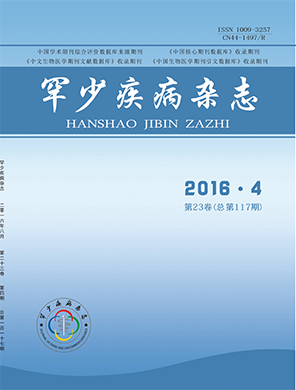摘要
目的 通过多项指标对比序贯式不停跳冠脉搭桥与非序贯式不停跳冠脉搭桥临床疗效。方法 随机选取于2009年1月 至2015年1月在我院接受冠状动脉旁路移植手术的非序贯式不停跳冠脉搭桥手术患者与序贯式不停跳冠脉搭桥手术 患者各28例为研究对象,总计56例。将行非序贯式不停跳冠脉搭桥患者记为对照组,行序贯式不停跳冠脉搭桥患 者记为观察组。对比两组术后1天(A1)以及术后2天(A2)的心肌肌钙蛋白I(cTnI)浓度、肌酸激酶-同工酶(CK-MB)活 性、氨基酸末端前体脑钠肽(NT-proBNP)浓度以及桥血管使用数目、手术时间、出血量、住院费用。结果 行序贯式 不停跳冠脉搭桥患者组(观察组)在A1、A2时刻的cTnI、CK-MB、NT-proBNP低于行非序贯式不停跳冠脉搭桥患者组 (对照组)。此外,观察组在桥血管使用数目、手术时间、出血量、住院费用显著低于对照组。结论 序贯式OPCABG 术对心肌损伤的程度小于非序贯式OPCABG,并且序贯式OPCABG术桥血管使用少,手术时间短,住院费用更低,尤 其对于主动粥样斑块较多,桥血管缺乏,基础状态较差的病人优于非序贯式OPCABG,极大地增加了OPCABG手术适应 症。
Objective The clinical effect of sequential type of OPCABG and non-sequential type of OPCABG was compared by a number of indicators. Methods From 2009 January to 2015 January underwent coronary artery bypass graft operation in our hospital were randomly selected for sequential type of OPCABG and non-sequential type of OPCABG patients all 28 patients as research object, a total of 56 cases. According to different operation modes, the non sequential OPCABG patients were recorded as the control group, and the sequential OPCABG was recorded as the observation group, compared the two groups of anesthesia induced by 5Min after operation (T0), 1d after operation (T1) and 2d (T2) of myocardial troponin I (cTnI) concentration, creatine kinase isoenzyme (CK-MB) activity, the concentration of blood glucose and the number of vessels used in the bridge, operation time, bleeding volume, hospitalization expenses. Results Two groups of patients with cTnI, CK-MB, NT-proBNP on T0 moment, any time the level of IL-6 were no difference (P>0.05), in T1, T2 moments CTnI, CK-MB, NT-proBNP were lower than the control group In addition, the use of the number of the observation group in the bridge, the operation time, blood loss, hospitalization costs were significantly lower than the control group. Conclusion The degree of myocardial injury in the sequential OPCABG is less than the non sequential OPCABG. The use of bridge vessel in sequential OPCABG is less, the operation time is shorter, the cost of hospitalization is lower, especially for the the patients with Aortic atherosclerosis, and the patients with lack of the bridge vessel, which greatly increased the OPCABG surgical indications.
【关键词】序贯式不停跳冠脉搭桥术;心肌损伤;对比研究
【中图分类号】R542.2
【文献标识码】A
【DOI】10.3969/j.issn.1009-3257.2016.03.001
前言
冠状动脉粥样硬化性心脏病极大地威胁人类健 康,是全球人类十大死亡原因之一。它是指冠状动脉 血管发生动脉粥样硬化病变而引起血管腔狭窄或阻 塞,进而心肌缺血、缺氧或坏死而导致的心脏病。故 此国际上已达成共识:尽早重新恢复有狭窄或堵塞病变的冠状动脉血运,最大程度的降低心肌缺血缺氧, 防止心肌因长时间缺血缺氧而发生梗死加重或者再发 新的梗死。冠状动脉旁路移植术主要适用于严重冠状 动脉病变,不能接受介入治疗或治疗后复发,并且合 并有梗死后严重并发症的患者。临床研究表明冠状动脉旁路移植术治疗冠心病的效果确切[1]。非体外循环 冠脉旁路移植术,能最大化减轻心肌缺血缺氧导致的 心肌损伤[2]。而序贯式不停跳冠脉搭桥手术能更加有 效保护心肌,减轻心肌在手术中损伤,能尽快恢复狭 窄严重冠脉区段的血流及其支配区域的心肌血运。本 文通过对比研究多个心肌损伤指标评估序贯式OPCABG 与非序贯式OPCABG心肌损伤程度,及对比桥血管使用 数目,住院时间,住院费用等指标研究序贯式OPCABG 与非序贯式OPCABG治疗效果及社会效益。
罕少疾病杂志
第23卷, 第 4 期
2019年11月

相关文章